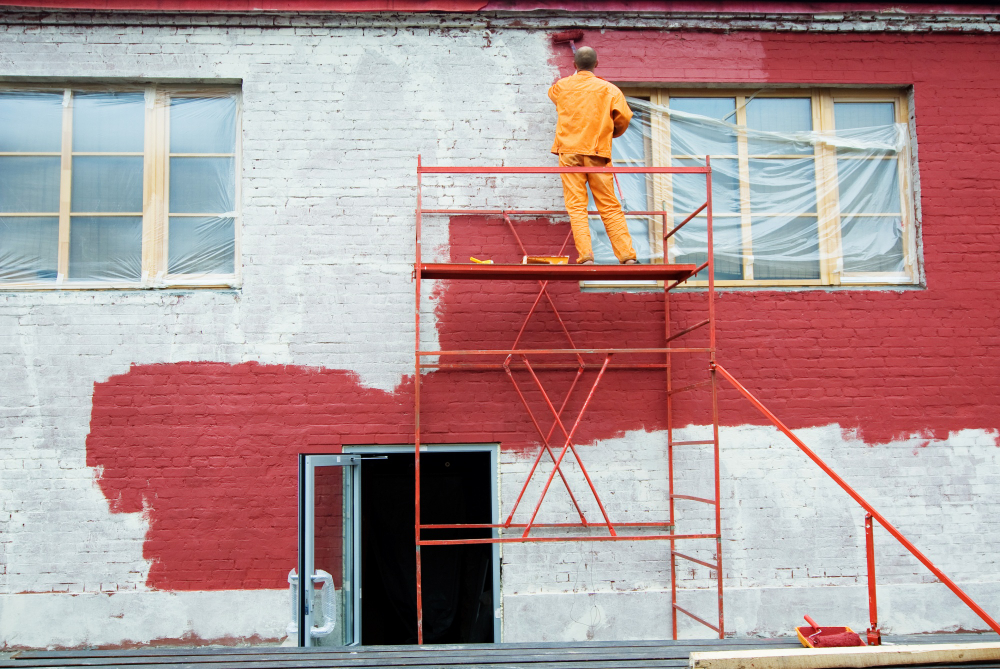Painting a house can be a daunting task, demanding hours of strenuous work, meticulous attention to detail, and access to hard-to-reach areas. Fortunately, the advent of scaffolding has revolutionized the painting industry, enhancing both safety and efficiency. This article delves into the benefits of using an aluminum scaffold tower for house painting, and the essential considerations before embarking on your painting project.
The Power of Scaffolding in House Painting
Scaffolding, a time-honored tool in construction and maintenance, has gained significant traction in the painting industry. Its popularity stems from the myriad of benefits it offers, particularly in house painting.
Safety and Stability
Scaffolding provides a secure platform for painters, significantly reducing the risk of accidents and injuries. This safety feature is paramount, especially when working at height.
Accessibility and Efficiency
Scaffolding ensures that every corner of your house gets the attention it deserves. It allows painters to reach challenging areas with ease, ensuring a thorough and uniform paint job. Moreover, scaffolding expedites the painting process, reducing disruptions and ensuring a swift return to normalcy.
Choosing the Right Scaffolding: Key Considerations
While scaffolding is an invaluable tool for exterior house painting, it’s crucial to understand that not all scaffolding is created equal. Here are some factors to consider when choosing the right scaffolding for your project.
Understanding Scaffolding Systems
The most prevalent scaffolding systems for house painting include frame scaffolding, tower scaffolding, suspended/swing stage, and mast climbing. Each type has its unique pros and cons, which should be evaluated before making a decision.
Load Capacity
The scaffolding’s load capacity, or the maximum weight it can safely support, is a crucial factor. Ensure your chosen scaffolding can accommodate the weight of the materials and tools you’ll be using during your painting project.
Cost and Rental Considerations
Beyond the cost of the scaffolding itself, consider potential rental and setup fees. These costs can accumulate quickly, especially for larger projects. It’s prudent to compare costs among different vendors to secure the best deal.
Regulatory Compliance
Familiarize yourself with local laws and regulations regarding scaffolding use. Compliance with these rules is not only a legal requirement but also a safety imperative.
Safety First: Ensuring Safe Use of Scaffolding
Safety should always be the top priority in any house painting project. Here are some tips to ensure safe use of scaffolding.
Appropriate Safety Gear
Always wear the necessary safety equipment, including hard hats, dust masks, goggles, and protective clothing. This gear will shield you from potential hazards while working at height.
Secure Scaffolding
Ensure the scaffolding is properly secured with tie-downs or other stabilizing devices. Regularly inspect the scaffolding for any signs of damage or wear.
Use of Guardrails and Toeboards
Install guardrails and toeboards on the scaffolding. These additions provide extra safety by preventing falls and keeping tools and materials from falling off the scaffolding.
Emergency Preparedness
Have an emergency plan outlining the steps to take in case of an accident or injury. This plan ensures everyone knows what to do in an emergency.
Conclusion: The Aluminum Scaffold Tower Advantage
Incorporating an aluminum scaffold tower in your house painting project can significantly enhance efficiency, safety, and the quality of work. It’s a smart investment for homeowners and professional painters alike. By considering the points outlined in this article, you can make the most of your painting project, ensuring a result that is both beautiful and durable.

